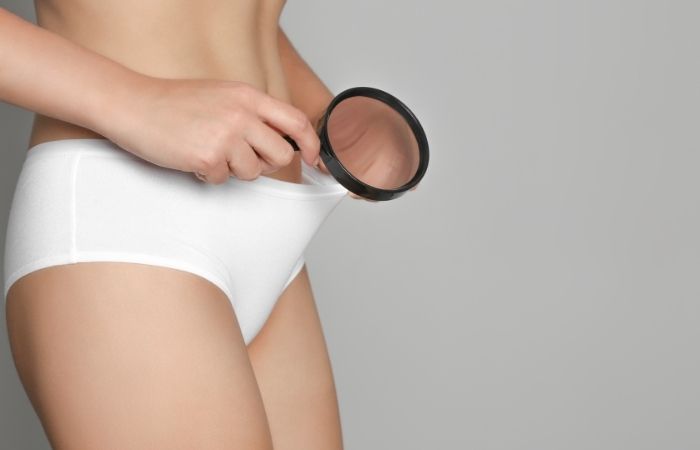Quick Answer: Lesbian and queer women can absolutely get STDs like herpes, HPV, BV, and more, often through oral, fingers, or shared sex toys. Testing matters, even without male partners, and symptoms aren’t always obvious.
“I Didn’t Think Lesbians Got STDs”, Real Talk
Kara, 29, had been hooking up with women for years. She’d never used a dental dam. Never been offered an STD test. “I always thought I was safe,” she said. “Doctors never brought it up. No one ever told me queer women could get STDs.”
“When I tested positive for herpes, I was shocked. I hadn’t slept with a man in over 10 years.”
Kara isn’t alone. Medical bias, lack of inclusive sex ed, and the myth that “lesbians don’t get STDs” put thousands at risk every year. The reality is more complex, and more common, than most people realize.

People are also looking for: I Thought I Was Safe Because We’re Both Women, Then I Got Herpes
What STDs Can Lesbian Women Actually Get?
Let’s set the record straight: queer women are at risk for almost every sexually transmitted infection. Here are the most common ones, and how they move between bodies without needing a penis in the room:
- Herpes (HSV-1 & HSV-2): Skin-to-skin transmission during oral sex, fingering, or toy use
- HPV (Human Papillomavirus): Spreads through genital contact and oral-genital sex, even without visible warts
- BV (Bacterial Vaginosis): Often misdiagnosed but commonly passed between female partners via fluid exchange
- Trichomoniasis: Less common in lesbian encounters, but still possible through shared fluids or toys
- Chlamydia & Gonorrhea: Oral and vaginal transmission via fingers, toys, or saliva
Just because a hookup felt “safe” doesn’t mean it was risk-free. Protection isn’t just about condoms, it’s about knowledge, communication, and testing.
Common Symptoms Queer Women Shouldn’t Ignore
STDs can be quiet. They don’t always show up as pain or sores. In fact, many queer women don’t know they’re infected until a routine Pap or their partner gets symptoms. Here’s what to look for:
- Itching, burning, or unusual discharge (especially after sex or menstruation)
- Sores or blisters on the vulva, anus, or mouth, even if they’re painless
- Changes in vaginal odor that persist beyond your cycle
- Pain during oral or finger sex, not just penetrative acts
- Throat discomfort or swollen lymph nodes after oral sex
If you’ve had any of the above, and yes, even just from a one-time hookup, it’s time to get tested. You deserve answers, not assumptions.
The Myth That Keeps Lesbians Undiagnosed
“You don’t need STD testing, you don’t have male partners.” If you’ve heard that from a doctor, you're not alone. Medical dismissal is a dangerous form of systemic bias, and it’s one reason lesbian, bisexual, and queer women are under-tested and underdiagnosed.
Studies show that many providers fail to ask about same-sex sexual behavior at all. And even when patients self-identify as queer, they often aren’t offered comprehensive STD testing. That means infections like HPV, herpes, BV, and trich go undetected for years, leading to complications, stigma, and emotional damage.
It’s not your job to educate your doctor, but it might be your job to advocate for your health. Keep reading for tips on how to ask for testing (and get taken seriously).
Check Your STD Status in Minutes
Test at Home with Remedium3-in-1 STD Test Kit

 For Men & Women
For Men & Women Results in Minutes
Results in Minutes No Lab Needed
No Lab Needed Private & Discreet
Private & DiscreetOrder Now $69.00 $147.00
For all 3 tests
How STDs Actually Spread Between Women
It’s not just “wet stuff” that spreads STDs. It’s fingers, tongues, toys, towels, and time. Here are the real transmission routes for women who have sex with women:
- Oral sex: HSV-1, HPV, gonorrhea, and chlamydia can all spread through mouth-to-genital contact
- Shared sex toys: Especially if not cleaned or covered between partners
- Manual sex (fingering): Microtears and fluids allow for viral and bacterial transfer
- Skin-to-skin contact: Herpes and HPV don’t need penetration, just contact
- Saliva: Can carry viral STDs like HSV, especially during oral play
You don’t need sperm for an STD to happen. You just need a combination of contact, fluid, and friction, which most queer hookups include.
Dental Dams, Gloves, and the Tools of Queer Protection
Protection looks different in queer sex, but it’s no less important. Here's how to actually stay safer, no matter how you connect:
- Dental dams: Use during oral sex, cut open condoms can work in a pinch
- Latex gloves: Especially helpful during finger play or fisting to prevent microtears and spread
- Condoms on toys: Change them between partners and holes
- Clean your toys: Hot water and antibacterial soap, or use barrier protection
It’s not about killing the vibe, it’s about caring for yourself and your partners. Make it a routine. Make it sexy. Make it non-negotiable.
Getting Tested Without Being Dismissed
This is where it gets hard. You walk into the clinic, say you’ve only been with women, and suddenly you're not taken seriously. Here’s how to take back that power:
- Be clear: “I’ve had oral and manual sex with women. I want a full STD panel.”
- Ask for what you need: “Please include tests for herpes, HPV, gonorrhea, chlamydia, and trich.”
- Push back on assumptions: “My risk comes from activity, not gender. Please treat this like any other sexual health visit.”
- Switch providers if needed: Lesbian-affirming care exists. You deserve it.
Or skip the awkwardness altogether with at-home STD kits. They’re discreet, inclusive, and don’t require convincing anyone.

People are also looking for: Why Black Queer Men Still Face the Highest HIV Rates, And What’s Really Behind It
Yes, You Still Need Pap Smears and HPV Testing
One of the most dangerous myths is that queer women don’t need Pap smears or HPV screening. The reality? HPV doesn’t care about gender, it spreads through skin, fluids, and mouth-to-genital contact. That means it can show up in any body with a cervix, including those who’ve never had sex with a man.
The CDC recommends Pap smears every 3 years for anyone with a cervix starting at age 21. If you’re over 30, you may qualify for Pap + HPV co-testing. If you’ve had any genital contact, oral sex, or shared toys, you’re in the risk category.
Don’t let outdated assumptions keep you out of preventive care. HPV is the most common STD among queer women, and the most preventable.
How to Tell a Partner You’ve Tested Positive
Testing positive is hard enough. Now you have to talk about it. And when your partner also identifies as lesbian or queer, the conversation can feel doubly vulnerable, because of the shared assumptions of safety and trust.
Here’s how to approach it:
- Start with honesty: “I just got tested and found out I have [STD]. I didn’t know. I want to tell you because I care.”
- Skip the blame game: Many STDs don’t show symptoms right away. Focus on care, not guilt.
- Share resources: Offer links or testing options.
- Stay kind: You’re not “dirty.” You’re informed. And that’s something to be proud of.
Most people react with more compassion than you expect. And if they don’t? That tells you everything you need to know.
“But I Didn’t Even Have Sex”, The Shame Spiral
Many lesbian and queer women who test positive for STDs say the same thing: “I didn’t even have real sex.” But that’s the problem. We’ve been taught that only penis-in-vagina counts as “sex”, so everything else feels safe, or not worth talking about.
But sex is sex. And any kind of sexual contact, oral, manual, toy-based, even kissing if sores are involved, can transmit STDs.
There’s no shame in how you connect. There’s only danger in not knowing. The shame spiral only serves silence. Testing is the exit ramp.
Check Your STD Status in Minutes
Test at Home with RemediumTrichomoniasis Test Kit

 For Women
For Women Results in Minutes
Results in Minutes No Lab Needed
No Lab Needed Private & Discreet
Private & DiscreetOrder Now $33.99 $49.00
When Queer Sex Deserves Queer-Centered Care
You deserve doctors who ask the right questions. You deserve providers who don’t skip your Pap because “you’re probably fine.” You deserve testing that reflects your actual sex life, not the straight template someone else created.
That means:
- Queer-affirming clinics that recognize all body types and identities
- STD testing panels that include HSV, HPV, BV, trich, and more
- Testing frequency that aligns with activity, not just assumptions
Don’t wait for someone else to make queer healthcare better. Demand it. Ask for it. Or use at-home testing kits that let you skip the gatekeepers entirely.
Why “Low-Risk” Doesn’t Mean No Risk
Too many queer women are told their sexual behavior is “low-risk.” But that language often becomes a barrier, not a benefit. It discourages testing, minimizes symptoms, and erases legitimate medical needs.
“Low-risk” does not mean “no-risk.” You can still get HPV, herpes, chlamydia, gonorrhea, BV, and other infections through oral, digital, and toy-based sex. Risk is not just about what you did, it’s about how often, with whom, and how your body reacts.
If you’ve been told not to worry because of your orientation or your partner’s gender, it’s time to challenge that. You deserve real data, not lazy labels.
The Emotional Toll of Being Ignored in Healthcare
It’s not just about your body, it’s about how you’re treated. When providers ignore STD risks for queer women, they reinforce shame, confusion, and silence. It sends the message: “Your sex life doesn’t matter.”
Lena, 33, shared: “I was denied a Pap smear because I said I was dating a woman. The nurse actually said, ‘You don’t need that.’ I left feeling erased.”
“I cried in the parking lot. I felt dirty for even asking.”

People are also looking for: Dating Again at 45? The STD Risk No One Warns You About
Queer Safer Sex: What They Should Have Taught Us
Sex ed rarely includes queer realities. If you didn’t learn how to protect yourself during oral, scissoring, or toy play, you’re not alone. Most of us didn’t.
Here’s what queer-inclusive sex ed should include:
- Use dental dams or cut-open condoms during oral sex
- Wash toys thoroughly or use condoms on toys (change between partners)
- Latex gloves can reduce risk during digital play or fisting
- Talk about testing like you talk about lube, freely and often
Safer sex is just that, safer. No method is perfect, but informed practices make a difference. Don’t let the lack of education define your protection.
Why At-Home Testing Can Be a Game-Changer
For many lesbian and queer women, the doctor’s office feels more like a battlefield than a safe space. That's where at-home STD kits come in, they’re private, accurate, and don’t require explaining your sex life to a stranger.
Benefits of at-home testing include:
- Discreet packaging: No awkward pharmacy pickups
- Full-panel options: Including herpes, HPV, HIV, and bacterial STDs
- Fast results: Usually within a few days
It's care on your terms, in your space. Whether you’re single, poly, partnered, or playing, it’s never been easier to protect yourself.
Check Your STD Status in Minutes
Test at Home with Remedium7-in-1 STD Test Kit

 For Men & Women
For Men & Women Results in Minutes
Results in Minutes No Lab Needed
No Lab Needed Private & Discreet
Private & DiscreetOrder Now $129.00 $343.00
For all 7 tests
FAQs
1. Can lesbian women really get STDs?
Yes. STDs like HPV, herpes, BV, and even chlamydia can spread through oral, manual, and toy-based sex between women.
2. What STDs are most common among queer women?
HPV, herpes, and bacterial vaginosis are the most frequently diagnosed among women who have sex with women. Many cases go untested due to stigma or ignorance.
3. Do I need an STD test if I’ve never had sex with a man?
Absolutely. Risk is based on sexual behavior, not the gender of your partners. Oral, skin-to-skin, and toy-based sex all carry transmission risks.
4. Can I get HPV from another woman?
Yes. HPV spreads through genital and oral contact, even without visible symptoms. It's one of the most common STDs in queer women.
5. What does a Pap smear test for?
A Pap smear checks for abnormal cervical cells, which can be caused by HPV. It does not test for other STDs unless combined with an HPV screening.
6. Are dental dams really necessary?
They reduce the risk of transmitting herpes, HPV, and other infections during oral sex. While underused, they’re a powerful tool for queer safer sex.
7. Can I get tested for STDs at home?
Yes. Services like STD Rapid Test Kits offer discreet, accurate testing for a range of STDs, no awkward doctor visit required.
8. Why do providers dismiss lesbian patients for STD tests?
Bias and lack of training. Many assume lesbians are low-risk, but that’s not based on evidence. It's critical to advocate for your care.
9. How often should queer women get tested?
At least once a year, or more often if you're sexually active with multiple partners, use shared toys, or experience symptoms.
10. What do I do if I test positive?
Take a breath, talk to your partners, and seek follow-up care. Most STDs are treatable or manageable. You're not alone, and you’re not dirty.
Before You’re Dismissed Again, Here’s What to Do
Being queer doesn’t make you immune. Being a woman doesn’t make you invisible. You have a right to full-spectrum STD care, without shame, silence, or dismissal.
Test yourself. Educate your partners. And if your provider won’t listen? Fire them. You deserve care that sees you, and respects how you have sex.
Don’t wait and wonder, get the clarity you deserve. This at-home combo test kit checks for the most common STDs discreetly and quickly.
Sources
1. CDC – Women Who Have Sex with Women: STI Risk & Screening Guidance
2. Clinical Infectious Diseases – STIs Among Women Who Have Sex with Women
3. PubMed – STIs Among WSW: Beno et al., WSW Should Not Be Presumed Low-Risk
4. Medical News Today – Which STIs Can Affect Lesbians & Queer Women?
5. Wikipedia – Women Who Have Sex With Women: STI Transmission & Screening Challenges










